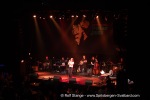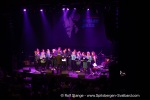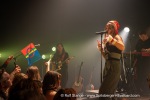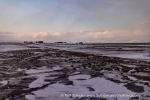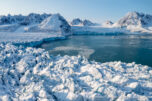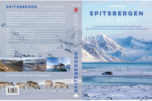-
current
recommendations- Liefdefjord
New page dedicated to one of Spitsbergen's most beautiful fjords. Background information and many photos.
- New Spitsbergen guidebook
The new edition of my Spitsbergen guidebook is out and available now!
- Liefdefjord
New page dedicated to one of Spitsbergen's most beautiful fjords. Background information and many photos.
Page Structure
-
Spitsbergen-News
- Select Month
- April 2025
- March 2025
- February 2025
- January 2025
- December 2024
- November 2024
- October 2024
- September 2024
- August 2024
- July 2024
- June 2024
- May 2024
- April 2024
- March 2024
- February 2024
- January 2024
- December 2023
- November 2023
- October 2023
- September 2023
- August 2023
- July 2023
- June 2023
- May 2023
- April 2023
- March 2023
- February 2023
- January 2023
- December 2022
- November 2022
- October 2022
- September 2022
- August 2022
- July 2022
- June 2022
- May 2022
- April 2022
- March 2022
- February 2022
- January 2022
- December 2021
- November 2021
- October 2021
- September 2021
- August 2021
- July 2021
- June 2021
- May 2021
- April 2021
- March 2021
- February 2021
- January 2021
- December 2020
- November 2020
- October 2020
- September 2020
- August 2020
- July 2020
- June 2020
- May 2020
- April 2020
- March 2020
- February 2020
- January 2020
- December 2019
- November 2019
- October 2019
- September 2019
- August 2019
- July 2019
- June 2019
- May 2019
- April 2019
- March 2019
- February 2019
- January 2019
- December 2018
- November 2018
- October 2018
- September 2018
- August 2018
- July 2018
- June 2018
- May 2018
- April 2018
- March 2018
- February 2018
- January 2018
- December 2017
- November 2017
- October 2017
- September 2017
- August 2017
- July 2017
- June 2017
- May 2017
- April 2017
- March 2017
- February 2017
- January 2017
- December 2016
- November 2016
- October 2016
- September 2016
- August 2016
- July 2016
- June 2016
- May 2016
- April 2016
- March 2016
- February 2016
- January 2016
- December 2015
- November 2015
- October 2015
- September 2015
- August 2015
- July 2015
- June 2015
- May 2015
- April 2015
- March 2015
- February 2015
- January 2015
- December 2014
- November 2014
- October 2014
- September 2014
- August 2014
- July 2014
- June 2014
- May 2014
- April 2014
- March 2014
- February 2014
- January 2014
- December 2013
- November 2013
- October 2013
- September 2013
- August 2013
- July 2013
- June 2013
- May 2013
- April 2013
- March 2013
- February 2013
- January 2013
- December 2012
- November 2012
- October 2012
- September 2012
- August 2012
- July 2012
- June 2012
- May 2012
- April 2012
- March 2012
- February 2012
- January 2012
- December 2011
- November 2011
- October 2011
- September 2011
- August 2011
- May 2011
- April 2011
- March 2011
- February 2011
- January 2011
- December 2010
- November 2010
- September 2010
- August 2010
- July 2010
- June 2010
- May 2010
- April 2010
- March 2010
- February 2010
- November 2009
- October 2009
- August 2009
- July 2009
- June 2009
- May 2009
- April 2009
- March 2009
- February 2009
- January 2009
- December 2008
- November 2008
- October 2008
- August 2008
- July 2008
- June 2008
- May 2008
- April 2008
- March 2008
- February 2008
- April 2000
- Select Month
-
weather information

| Guidebook: Spitsbergen-Svalbard |
Home → February, 2025
Monthly Archives: February 2025 − News & Stories
The Arctic Chamber Music Festival
One of the major annual events in Longyearbyen’s cultural calendar is the “Arctic Chamber Music Festival”, which this year is dedicated to the art of storytelling as well as music.

This year’s motto of the ‘Arctic Chamber Music Festival’: Storytellers.
As with the Dark Seasons Blues Festival and Polar Jazz, there is plenty on offer for the audience. For example, at noon on Saturday at the Svalbard Museum, the story of Willem Barentsz’ expedition, who famously discovered Spitsbergen in 1596, was told in music …
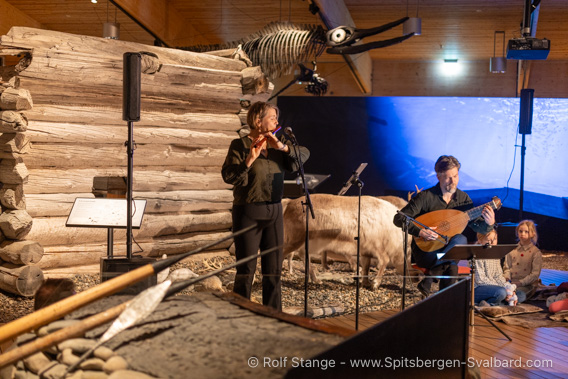
Torun Torbo with the ‘Barentsz flute’ and Solmund Nystabakk on the lute
at the Svalbard Museum.
… with contemporary music played on a flute that is an exact copy of the flute found in the remains of Barentsz’ winter camp on Novaya Zemlya, accompanied by a lute. The original flute can be seen in the Rijksmuseum in Amsterdam.

Torun Torbo with the ‘Barentsz flute’:
‘Tonen i isen’, the Barentsz story told musically.
Probably the highlight of this year’s chamber music festival in Longyearbyen was the Saturday evening concert. Not only because the highlights are presented at this prime time, but also because the venue had to be moved at short notice for technical reasons – to the day facilities of Mine 7! The venue itself thus became an event of exclusive value, as this last Norwegian coal mine still in operation is not normally open to the public.
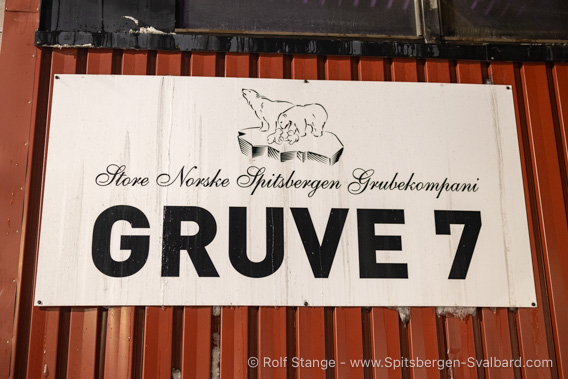
Mine 7: suddenly the venue for the Arctic Chamber Music Festival.
In prose and music, there was the story of one of the loneliest theatre and ballet stages in the world, in California’s Death Valley:
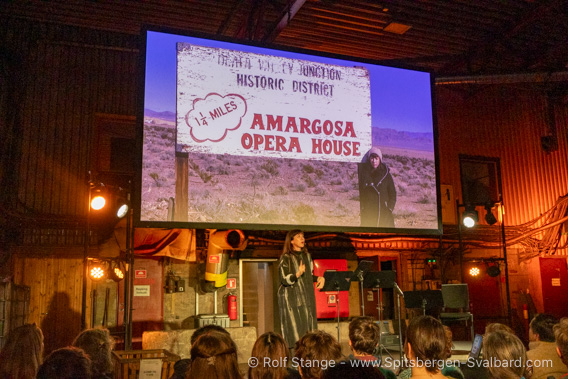
Missy Marzoli from New York introduces Marta Becket and her (Marta’s) lonely theatre
in Death Valley Junction …
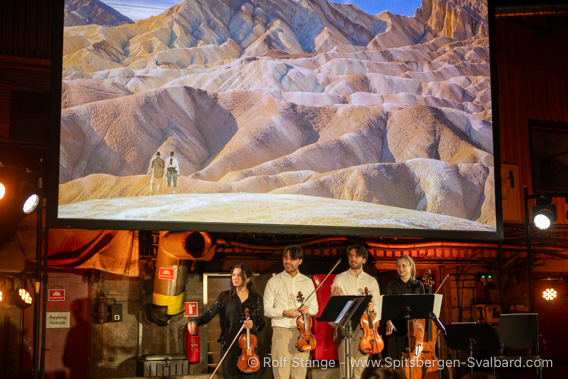
… musically realised by the NOVO Quartet from Denmark.
This was followed by the life and work of the Venetian composer Barbara Strozzi, impressively performed with soprano and lute.
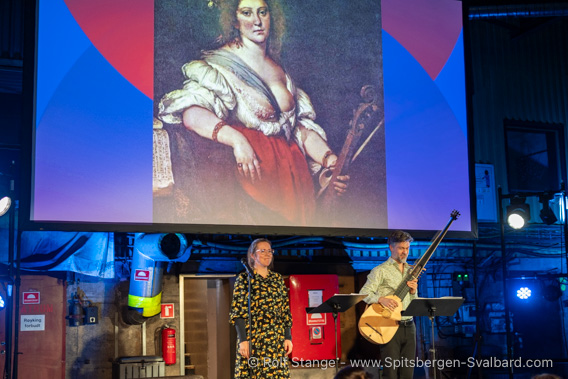
Berit Norbakken (soprano) and Solmund Nystabakk (lute).
The somewhat unhappy looking lady above is Barbara Strozzi (approximately 1619-1677)
And of course that wasn’t all that was on offer at the Arctic Chamber Music Festival. There was so much more, from ‘Peter und der Wolf’ to the ‘Four Seasons’.
Tilia-Ensemble in Longyearbyen and Tromsø
If you are spontaneous or happen to be in the area anyway, you can enjoy another musical highlight next week, when the Tilia Ensemble from Dresden performs a programme of music from the far north in the Svalbard Church on Tuesday (25 February) and the famous Tromsdalen Cathedral in Tromsø on Friday.
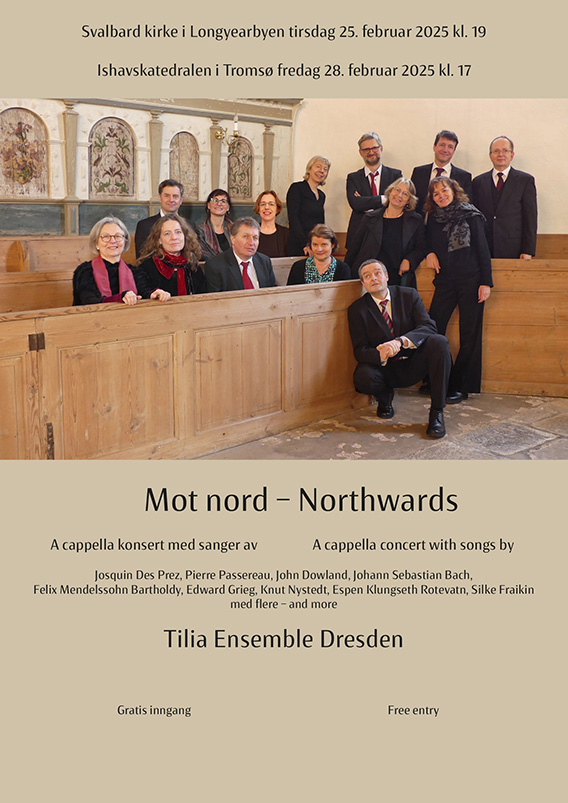
Tilia Ensemble: 25th Feb in Longyearbyen, 28th Feb in Tromsø.
New pages
Things are progressing here too. One of the most beautiful places on Spitsbergen finally got the page it deserves, namely Kapp Linné. Be sure to check it out! And the page about Gjertsenodden in St. Jonsfjord is not new, but it has been improved. Others too, but that’s enough for now.
And what else?
As I write this (on Sunday, 23rd February), a few kilometres away, on the north side of Adventfjord, a polar bear is walking around, and Sysselmester’s helicopter is already in the air to chase it away from town. It is the first polar bear to come close to Longyearbyen this year, as far as I have heard.
Light and darkness
Let there be light! Today, 16 February, the people in and around Longyearbyen were able to enjoy the first sunrise since 25 October, at least in theory. In between was the polar night, which has now come to an end.
Shortly after noon, however, the sun barely managed to reach 0.16 degrees above the horizon, hiding behind the mountains of Longyearbyen. It will only return to Longyearbyen on 8 March.
But on the heights around Longyearbyen it was possible to catch a few rays at midday today, like here on the slope of Hiorthfjellet on the north side of the Adventfjord.
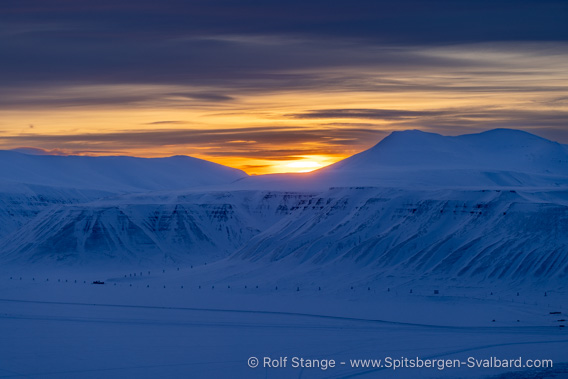
The first sunrise of the year on 16 February at midday over Adventdalen.
A few clouds made sure you didn’t get an overdose of sunshine.
And if that was too much, you can always take refuge in the glacier cave at Longyearbreen.
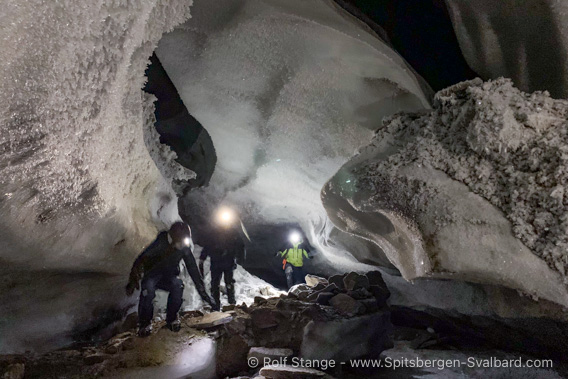
Glacier cave in Longyearbreen.
There it is really – REALLY! – dark without a lamp.

Glacier cave in Longyearbreen without lamp 😄.
Polarjazz
The days when the polar night meant only darkness and scurvy are long gone. Today Longyearbyen offers a lot of variety even in the dark winter. The cultural calendar always offers a lecture (often in Norwegian) or other smaller events.
Sometimes there are larger events, such as the Polarjazz jazz festival last weekend. Just as the Dark Seasons Blues Festival at the end of October, Polarjazz features local artists as well as well-known Norwegian and international musicians. Both festivals have been an integral part of Svalbard’s cultural calendar for many years.
Longyearbyen’s music scene kicks off
Polarjazz was opened on Thursday evening in Kulturhuset (the cultural centre) by a number of local artists. It is impressive how many active musicians Longyearbyen has to offer – after all, it is a village with a population of around 2500. But how many villages with a population of 2500 can put together a programme of almost three hours, with hardly anyone on stage for more than one song?
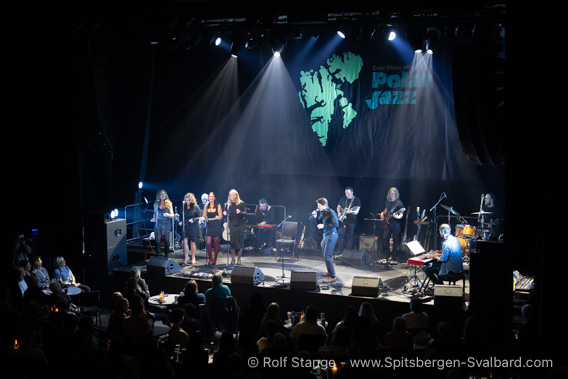
Opening evening of the Polarjazz festival
with musicians from Longyearbyen at the Kulturhus.
Commissioned work for the Spitsbergen Treaty
The programme continued until Sunday, with numerous events. One of the highlights was undoubtedly the world premiere of a work by Bugge Wesseltoft in the Huset, commissioned and realised for the 100th anniversary of the Spitsbergen Treaty, which came into force in 1925. In the nine sequences of his work, Wesseltoft has incorporated everything he associates with Svalbard, both sonically and visually, to the delight of audiences and critics alike.
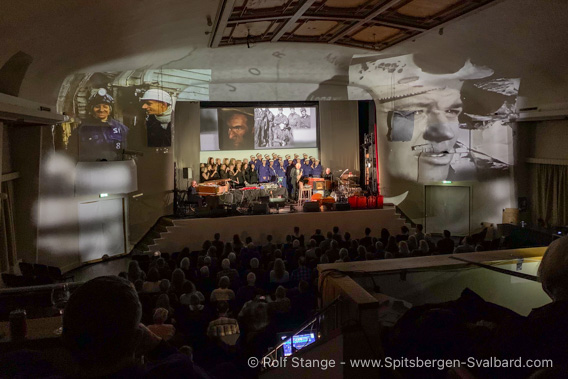
World premiere of the work by Bugge Wesseltoft at Huset.
Few, if any, seem to have noticed that he chose the Wellman-Bjørvig-Bentsen story, a drama from 1898-99 set in the Russian archipelago Franz Josefs Land, for the section devoted to the dramatic history of the various north pole expeditions, or they have simply overlooked it.
Ella Marie Hætta Isaksen
Another highlight was the performance of Sami singer and actress Ella Marie in Kulturhuset. Here the music was hot and loud, with modern sounds that didn’t lose their cultural roots. The political messages were not neglected either, such as the politically committed Sami singer’s unmistakable greeting to the Norwegian government, in which two middle fingers played the leading roles. Anyone who has the chance to see Ella Marie Hætta Isaksen, as she is known in full, on stage should not miss it.
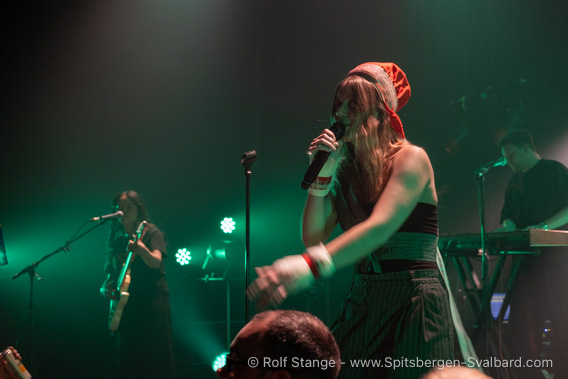
Ella Marie and band on stage in kulturhuset.
If you are thinking about taking a cultural trip to the polar night, you can take a look at the programme on their own website (2026 is still a long way off, although preparations are already underway behind the scenes).
And what else? The light is coming back, the dark core of the polar night is giving way to daylight. But it will be a few weeks before the sun really comes back again.
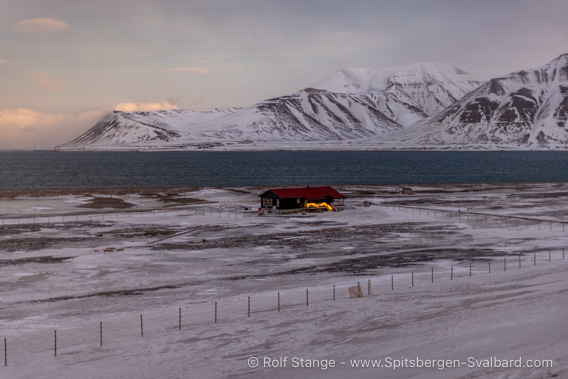
View over the campsite on Tuesday at noontime: the polar night is coming to an end.
As usual, a few more pictures for further impressions:
- gallery anchor link: #gallery_3498
Click on thumbnail to open an enlarged version of the specific photo.
The iron bed in the red-light district
The title might make your thoughts go astray 🤪 but don’t worry, this post doesn’t need an age limit.
I recently mentioned ‘Jernsenga’, ‘the iron bed’ in Adventdalen. If you want to know what that is all about and what the story behind it is, you can take a look at a new page I have created since then. Just click here and you’ll be in Adventdalen in your mind’s eye.
And as a visual highlight, there is a panoramic view on that page, taken in this incredibly beautiful red light that we recently had. It really looks like what I imagine it would look like on Mars, it was quite incredible!
So as not to spoil anything, there’s no picture here now. But you will of course find pictures on the new Jernsenga page.
And if you want even more of the beautiful red light, you should take a look at Innerhytta.
News-Listing live generated at 2025/April/14 at 12:08:17 Uhr (GMT+1)
